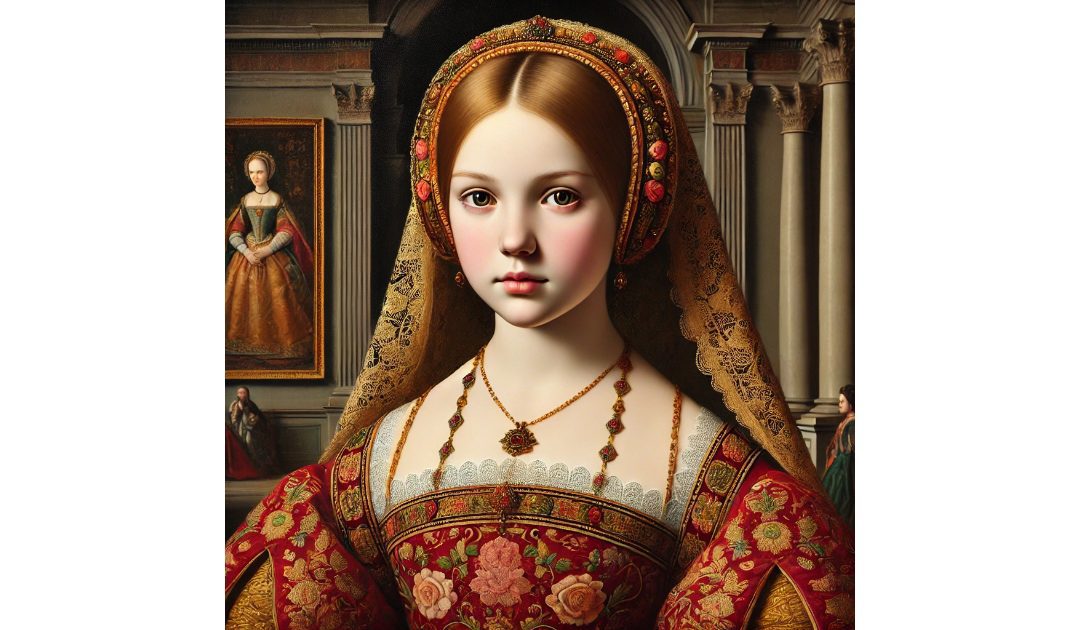On the 19th of May, 1499, Catherine of Aragon was married by proxy to Arthur, Prince of Wales. Catherine was 13 and Arthur was 12. In my work in progress, the fifth book of the Sir Anthony Standen Adventures, King Louis XIII of France is married by proxy to Anne of Austria.
Catherine of Aragon, born on 16 December 1485, was the daughter of the Spanish monarchs Ferdinand II of Aragon and Isabella I of Castile. As the youngest child in this powerful alliance, Catherine was destined for greatness. Her marriage to Henry VIII, King of England, marked a significant chapter in history, intertwining the fates of England and Spain and laying the foundations for the religious and political upheaval known as the English Reformation.
Catherine’s marriage by proxy was completed by a wedding in St. Paul’s Cathedral on the 15th of November, 1501. The marriage was a political alliance, meant to solidify the bond between England and Spain. Tragically, Arthur died just months later, leaving Catherine a widow at the tender age of 16. Despite this setback, Catherine remained in England, poised to fulfil her destiny as queen.
In 1509, Catherine married Henry VIII, Arthur’s younger brother, in a union that was initially filled with love and mutual respect. Catherine was crowned Queen of England, and her intelligence, piety, and dedication made her a beloved figure among her subjects. She was a queen who embodied the virtues of dignity and perseverance, traits that would be severely tested as her life unfolded.
Catherine’s marriage to Henry, however, was fraught with challenges. Although the couple had several children, only one survived infancy – Mary, later known as Mary I of England. Henry’s desperation for a male heir, coupled with his infatuation with Anne Boleyn, led him to seek an annulment of his marriage to Catherine. This decision would have far-reaching consequences, not only for Catherine but also for the entire kingdom.
In 1527, Henry’s request for an annulment triggered a series of events that would forever alter the religious landscape of England. Catherine, a devout Catholic, refused to acquiesce to the annulment, steadfastly maintaining that her marriage to Henry was valid, because her marriage to Arthur was not consummated. Her refusal set the stage for a monumental conflict between the English crown and the Catholic Church.
The Pope’s refusal to annul the marriage led Henry to break away from the Catholic Church, establishing the Church of England and initiating the English Reformation. Catherine’s steadfastness in the face of adversity made her a symbol of resistance against the king’s actions. Though her marriage was annulled in 1533, and she was subsequently banished from court, Catherine remained dignified and resolute.
Catherine of Aragon’s life was marked by personal and political strife, yet she maintained her integrity and faith throughout. Even in her later years of isolation, Catherine continued to champion her daughter Mary’s claim to the throne, ensuring her legacy endured. Her influence extended beyond her own lifetime, as the religious conflicts initiated during her marriage would continue to shape English history for generations.

